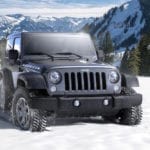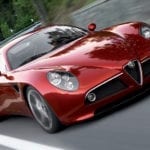GMC has long established itself as an automotive leader, creating some of the longest-lasting vehicles on the road today. Like in every family, there is the high achiever like the GMC Sierra pickup truck, which is one of GMC’s most wildly successful top-sellers year after year, and there is the black sheep of the family, like the Envoy XUV, a short-lived Frankenstein model that combined an SUV, truck, and convertible into a mishmash of confusion. They say you can’t achieve greatness without taking risks, and GMC has never been one to shy away from a challenge, but that doesn’t mean that all risks pay off in the end, something GMC is probably very aware of. We’ve highlighted a few of GMC’s risks, some of which took off, and a few fell short of greatness. So next time you’re prowling your local GMC dealer, keep your eyes peeled because you never know what you might find that might make you do a double take.
The Odd Envoy
What was going through GMC’s head when they designed the Envoy XUV? At first, this unassuming vehicle looks like a regular SUV with four doors and a large base, but look closer, and there’s a surprise, a retractable, power-sliding rear roof. What’s so weird about that? A lot of convertibles have a retracting roof. What’s the big deal? If the roof had opened up to let the sunshine in, that might have been one thing, but instead, the rear section of the roof was designed to move forward, creating an open pickup truck-like hauling space. The only problem? The space was so narrow it wasn’t good for much other than perhaps something like hauling home a small tree or tall piece of furniture like a dresser.
GMC designed the XUV to be a handy utility vehicle, making it simple to access the back with a folding or swinging gate option and a waterproof cargo hold that made it easy to wash out dirt and debris from hauling or work projects. The SUV also was offered a powerful V8 engine option and all-wheel drive. However, no matter how convenient the Envoy XUV was, it just didn’t take off for drivers. Maybe the design wasn’t eye-catching enough, or drivers just didn’t know what to do with the awkward space in the back. Either way, the XUV only lasted two model years before it was discontinued.
The XUV wasn’t the only odd Envoy model GMC designed. Drivers looking for more room than the already large Envoy offered could opt for the extended base model, the Envoy XL. While the Envoy XL had the same V6 and V8 engine choices, the XL offered a longer rear seating area, making the third row roomy and easy to access. The stretched-out Envoy XL was offered for several years before it was discontinued in 2006 and replaced with the GMC Acadia.
GM’s Vision
In 1939 GMC had a crazy vision and created a strange-looking RV/bus-type vehicle called the Futurliner. The GM Futurliner was and still is an eye-catching sight designed to display GMC’s ideas and hopes for the future. The two-story tall Futurliner maxed out at 38 mph and was part of The Parade of Progress, a traveling show that toured the USA to show off GM’s latest technology, from jet engines to future cars to microwaves.
The Futurliner was styled in a brilliant art-deco fashion that was hard to miss. Ruby red, white, and heavy chrome accents make this beauty a standout among other vehicles both then and now. A large gold-tone GM nameplate was displayed on the front, so there was no mistaking where the vehicle came from.
The Parade of Progress and the Futurliner toured the country up until the 1950s when TV and technology became more commonplace. Afterward, eleven Futurliners of the original twelve were sold off (with one Futurliner succumbing to a wreck in 1956). A few were donated to the Michigan State Police to use in road safety demonstrations, and another was bought by a preacher who used it for his traveling Evangelical show. Over the years, a few more have come up at auction, while a couple of others have been discovered rotting away, unable to be salvaged. Only nine are known to still be around today.
James & Jim
Luxury trucks are a thing these days, but back in the 1970s was a different story. Back then, pickup trucks were mostly used for work, but GMC was noticing the trend that families were slowly gravitating towards trucks for a family multi-use vehicle. GMC already had a hit with the Sierra, so they built on that by offering two 1975 special editions, the Gentleman Jim and the Beau James.
These two luxury editions offered drivers extras like vinyl, tweed, or velour upholstery, air conditioning, padded armrests, and special hood ornaments. While Beau James came in shades of blue and white, the Gentleman Jim took it a step further with a snazzy black and gold color scheme. Since both trucks were special editions of the Sierra, they were offered on a very limited basis. With only about 4,000 Beau James being made and even less of the Gentleman Jim, these trucks are a rare find and a treasure among collectors and truck enthusiasts.
The Syclone
Ever needed a truck but yearned for a Corvette? Then the Syclone is for you! This was a GMC truck produced for a short time in the 1990s that had the acceleration and performance of a sports car. This high power led to the Syclone being dubbed “the fastest pickup truck in the world.” The Syclone has a low-profile offered in shades of black, but drivers weren’t fooled. They knew the truck’s potential, with power lurking just beneath the hood.
The Syclone was modeled after a 1991 GMC Sonoma and had a very limited run, with only 3,000 trucks coming off the line between 1991 and 1992. While past GMC trucks were focused on luxury or work, the Syclone was designed to be all about performance. Even with its low production number, the Syclone became popular with collectors. During its short run time, the Syclone was offered in two additional very limited (only thirteen in total) special editions for Marlboro Racing and the Indianapolis 500. The Syclone was in demand among truck enthusiasts and collectors, but the general public wasn’t impressed.
While the Syclone was discontinued in 1992, GMC tried to pick up the pieces and cash in the budding SUV craze in 1991 with the new Typhoon. This was a midsize SUV that offered the high performance of the Syclone and the style of the popular GMC Jimmy, but GMC again failed to impress buyers who were looking for a flexible daily vehicle rather than a sports car. The Typhoon was discontinued in 1993.
Trendy or Innovative?
While some might argue GMC was simply throwing ideas at the wall like spaghetti, trying to see what would stick and what would fail, others could say that if you want to stay ahead of the game, you can’t be afraid to fail once in a while. GMC has and continues to offer forward-thinking vehicles that are both new and original, without forgetting its roots as a dependable, long-lasting car company that customers have come to depend on. GMC is a branch of the GM corporation, a company with a long history of diverse brands and vehicles, some remembered and some forgotten. So the next time you see a new GMC model that looks a little quirky, don’t immediately write it off as gimmicky when it could very well be a design evolution in progress.




